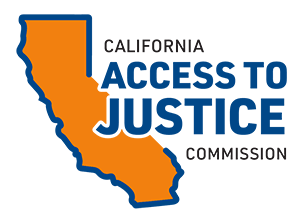“At Alameda County eviction court, one judge tries to swim through a tsunami”
The following is an excerpt from an Oaklandside article, “At Alameda County eviction court, one judge tries to swim through a tsunami” highlighting the work of one of our Commissioners, Judge Victoria Kolakowski:
With pandemic eviction moratoriums over, cases have shot up and the court is overwhelmed. Meet the sole judge handling the influx.
-
There are handwritten sticky notes all over Judge Victoria Kolakowski’s computer. One simply says, “Breathe.”
It’s a reminder that she can’t see enough, as the one and only Alameda County Superior Court judge handling unlawful detainers. Kolakowski was assigned this role in 2021. It’s not a glamorous position, but she felt called to the task because she has a history with eviction cases.
“I knew I wasn’t going anywhere until after we got through this,” she told The Oaklandside. That could mean she’s here for a while.
“Every week, I stop and go, ‘Has the wave crested?’” the judge said. “My guess is that we’re not going to see numbers like usual until 2024.”
Before the pandemic, the county typically saw 300 to 400 unlawful detainers monthly. In June, there were 772.
July saw a drop down to 503, according to the court. So perhaps the initial wave has reached its peak. But the numbers so far don’t include Oakland—the largest city in the county, and one that’s majority renter. Tenant attorneys and court staff are bracing for another surge, while struggling to emerge from the recent one.
—
In some ways, Kolakowski is not your stereotypical judge. She makes wry jokes, thinks out loud, and gently teases attorneys, telling them their bowties look “snazzy.”
“I am not the most formal person in the world,” she said. “Maybe I should be stuffier. But this is who I am. And I’m the same way on the bench.”
Kolakowski became the first openly transgender trial court judge of general jurisdiction when she was elected in Alameda County in 2010. She’s passionate about LGBTQ+ representation in the legal field and beyond, and when she’s not in the courtroom her calendar is packed with speaking engagements around the world. Her office walls are lined with awards and plaques.
She’s also an expert in genealogy and obtained a flurry of master’s degrees in the 80’s and 90’s: biomedical engineering, electrical engineering, divinity.
In other ways, Kolakowski is a traditional judge. She has a very judicial take on her duty, and her limitations.
“I’m here to enforce the laws,” she said. “I’m not here to establish housing policy.”
Despite some attorneys thinking she favors one side or another, Kolakowski denies she has allegiances.
“There’s a hard element to this kind of work, which is that there are a lot of people who are hurting,” she said. “And not everybody would agree with me about this, but that’s on both sides. I don’t view one group of people as being awful and the other side as saintly. You have thousands of individual situations.”
“As a judicial officer, she is like a customer service agent,” said Alana Grice Conner, an attorney who represents landlords, about Kolakowski. “She has to make sure that people who come into her courtroom feel heard—it may be the only time that litigant is in court. She doesn’t have the luxury of being dismissive or ignoring their concerns.”
Kolakowski tries to lend an empathetic ear to the cross section of the county that appears in front of her.
“Sometimes it just helps for them to be able to talk to somebody like me, and say, ‘This is awful. I shouldn’t have to do this,’” she said. “And I’ll go, ‘Yeah, I definitely hear you. And I understand your frustration.’”
While Kolakowski doesn’t write housing policy, she is tasked with interpreting it. “There are some very important legal questions coming up for the first time,” she said. The end of the moratoriums has complicated long-standing housing law.
What’s required of the landlord or the tenant when an eviction case that was filed in January 2020 comes to court for the first time three and half years later? What are the implications of the nuanced differences in each city’s eviction moratoriums once the policies end?
Some tenant attorneys, incredulous at how Kolakowski has been answering these kinds of questions, have appealed her decisions—hoping to set a precedent governing how the next wave of unlawful detainers will be decided.
At a hearing in July, the judge remarked to a tenant attorney that she expected to get formally challenged on the ruling she was poised to make.
“It’s your right and perhaps your obligation,” she told the East Bay Community Law Center lawyer. “If I’m getting things wrong I take no issue with that.”

